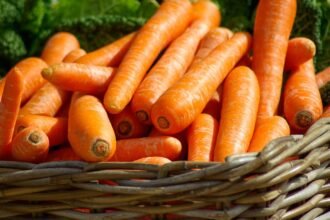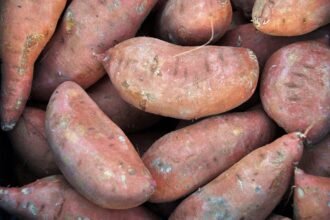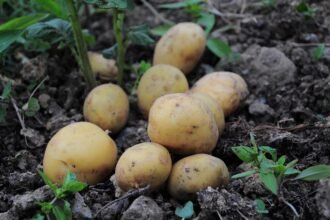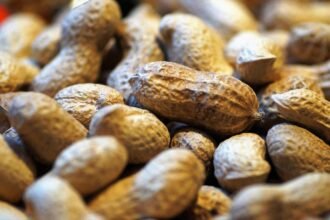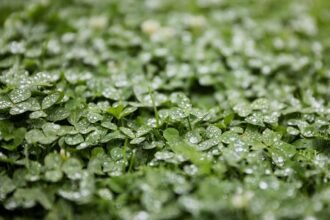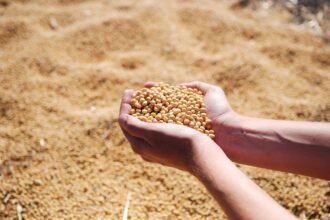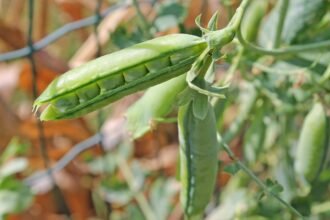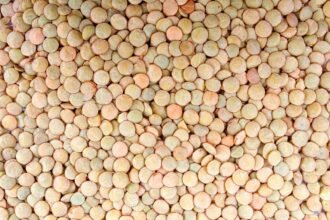Beans are one of the most widely grown and consumed legume crops worldwide. They are rich in protein, fiber, and essential vitamins, making them an important source of nutrition, especially in regions where animal protein is scarce. Beans are grown for both dry and green consumption, making them versatile for various culinary uses. Bean cultivation requires proper management practices, including soil preparation, planting, pest control, and harvesting techniques, to ensure high yields and good-quality produce. This guide covers the essential steps involved in bean farming, from soil preparation to post-harvest management.
1. Soil Preparation and Fertility Management
Beans prefer well-drained, fertile soils with good organic matter content. Proper soil management is essential for optimal growth and yield.
Key steps:
- Soil Testing: Before planting, conduct a soil test to assess nutrient levels and pH. Beans grow best in slightly acidic to neutral soils with a pH range of 6.0 to 7.5.
- Tillage: Beans do not require deep tillage. The soil should be plowed to a depth of 15–20 cm (6–8 inches) to create a loose and fine seedbed for proper root development.
- Fertilization: Beans are nitrogen-fixing plants, meaning they can convert atmospheric nitrogen into a usable form through their root nodules. However, they still require phosphorus (P) and potassium (K) for healthy root and pod development. Apply balanced fertilizer based on soil test recommendations. Beans do not require large amounts of nitrogen, and excess nitrogen can lead to excessive vegetative growth at the expense of pod production.
- Organic Matter: Incorporating compost or well-rotted manure into the soil improves its structure, water retention, and nutrient content, promoting better bean growth.
2. Selecting the Right Bean Variety
Choosing the right bean variety is crucial to suit your region’s climate, soil, and the intended use of the crop.
- Common Bean (Phaseolus vulgaris): This is the most widely grown bean variety, including types like kidney, pinto, black, and navy beans. It is grown in both temperate and tropical climates.
- Soybean (Glycine max): Grown primarily for oil production and animal feed, soybeans are also rich in protein and are commonly used in food products.
- Lima Beans (Phaseolus lunatus): Popular for their tender texture and flavor, lima beans are grown primarily in warmer climates.
- Chickpeas (Cicer arietinum): Chickpeas are a significant legume in Mediterranean regions and are grown for their high-protein seeds.
- Faba Beans (Vicia faba): These beans are mainly grown in cooler climates for both human and animal consumption.
Select varieties suited to your local growing conditions, pests, and diseases prevalent in your area.
3. Planting and Sowing Techniques
Proper planting practices ensure good seed germination and uniform growth, which are essential for maximizing yield.
- Planting Time: Beans should be planted after the last frost when soil temperatures reach at least 15°C (59°F). For cooler climates, select early-maturing varieties.
- Sowing Depth: Plant beans 3–5 cm (1.2–2 inches) deep. Shallow planting can expose seeds to drying, while deep planting may delay germination.
- Row Spacing: Beans are typically planted with row spacing of 30–45 cm (12–18 inches). Narrower spacing helps improve competition for light, but too close planting can reduce airflow and promote disease.
- Seed Rate: The seed rate for beans generally ranges from 30 to 50 kg per hectare, depending on the variety and desired plant density. Proper spacing ensures good air circulation and access to sunlight.
4. Water Management
Beans are relatively drought-tolerant but still require consistent moisture during critical growth stages, particularly during flowering and pod formation.
- Water Requirements: Beans require sufficient moisture during germination, flowering, and pod filling. Consistent moisture during these stages helps improve seed development.
- Rain-fed vs. Irrigated Systems: Beans can be grown under rain-fed conditions in regions with sufficient rainfall. However, in areas with irregular rainfall, supplementary irrigation is necessary.
- Irrigation Techniques: Use drip irrigation or sprinkler systems to minimize water wastage and ensure even distribution of water. Avoid over-watering, as beans do not tolerate waterlogged soils.
5. Nutrient Management
Proper fertilization is critical for healthy bean plants and maximizing yield. Beans are nitrogen-fixing plants, so they need lower levels of nitrogen compared to other crops.
- Nitrogen: Beans can fix their nitrogen needs from the atmosphere, so they require minimal nitrogen fertilizers. However, adding phosphorus and potassium is essential for root development and pod filling.
- Phosphorus and Potassium: Apply phosphorus at planting to encourage root development and potassium during the flowering and pod-filling stages to support plant growth and disease resistance.
- Micronutrients: Beans also require micronutrients such as boron, zinc, and iron. Ensure adequate levels of these nutrients in the soil for optimal growth.
6. Weed Control
Weeds compete with beans for nutrients, water, and light, reducing yield and quality. Effective weed management ensures beans grow strong and healthy.
- Pre-emergence Herbicides: Apply pre-emergence herbicides to control weeds before they sprout. This can be particularly effective for broadleaf weeds.
- Post-emergence Herbicides: After beans have emerged, use post-emergence herbicides to target specific weeds without harming the crop.
- Manual Weeding: For small-scale farms, manual weeding may still be necessary, especially in the early stages of growth.
- Mulching: Apply organic mulch, such as straw or leaves, to suppress weeds, conserve soil moisture, and improve soil structure.
7. Pest and Disease Management
Beans are susceptible to several pests and diseases that can damage plants and reduce yield.
Common Pests:
- Aphids: Aphids can spread viruses and weaken plants by feeding on the sap. Use insecticides or biological controls like ladybugs to manage aphid populations.
- Bean Weevil: The larvae of this pest attack bean seeds, leading to damage during storage. Control can be achieved through proper storage and the use of insecticides.
- Cutworms: These pests cut seedlings off at the soil line. Protect seedlings using insecticides or by applying physical barriers like collars around the plants.
Common Diseases:
- Rust: Bean rust, caused by various fungal species, leads to yellow lesions on leaves, reducing photosynthesis. Apply fungicides and use resistant varieties.
- Powdery Mildew: This fungal disease affects leaves and stems, leading to stunted growth. Use resistant varieties and fungicides for control.
- Bacterial Wilt: A disease caused by bacteria that causes wilting and yellowing of the plants. Proper crop rotation and avoiding overhead irrigation can help manage this disease.
- Integrated Pest Management (IPM): Employ IPM strategies by using biological control, resistant varieties, and minimal pesticide application to reduce environmental impact.
8. Harvesting and Post-Harvest Handling
Timely harvesting is crucial for maintaining bean quality and preventing losses.
- Harvest Timing: Beans should be harvested when the pods are fully mature, and the seeds are dry. For dry beans, this typically occurs 70–90 days after planting, depending on the variety.
- Mechanical Harvesting: For large-scale farms, use combine harvesters to efficiently harvest beans. This method helps reduce labor costs and minimizes grain damage.
- Manual Harvesting: In smaller operations, beans can be harvested manually by cutting the plants and allowing them to dry in the field before threshing.
- Drying: After harvesting, beans should be dried to reduce moisture content to about 12–14%. This helps prevent mold and fungal growth during storage.
- Storage: Store beans in a cool, dry, and well-ventilated area to prevent spoilage. Use airtight containers or silos to protect beans from pests and moisture.
9. Sustainable Bean Farming Practices
Adopting sustainable farming practices in bean cultivation reduces environmental impact and ensures long-term productivity.
- Crop Rotation: Rotate beans with other crops like corn, wheat, or legumes to reduce pest and disease pressure and improve soil health.
- Conservation Tillage: Minimize tillage to prevent soil erosion, improve soil structure, and retain moisture.
- Water Conservation: Use efficient irrigation methods and rainwater harvesting to reduce water usage and improve crop productivity.
- Organic Farming: Consider growing beans organically to reduce the reliance on synthetic fertilizers and pesticides, which benefits both the environment and the farmer’s bottom line.
Conclusion
Bean cultivation requires careful management of soil, water, nutrients, pests, and diseases to ensure high yields and good-quality produce. By following best practices for soil preparation, planting, pest management, and harvesting, farmers can maximize bean production while maintaining environmental sustainability. Whether growing beans for food, feed, or commercial purposes, understanding the key technical aspects of bean farming will help you achieve successful harvests year after year.




